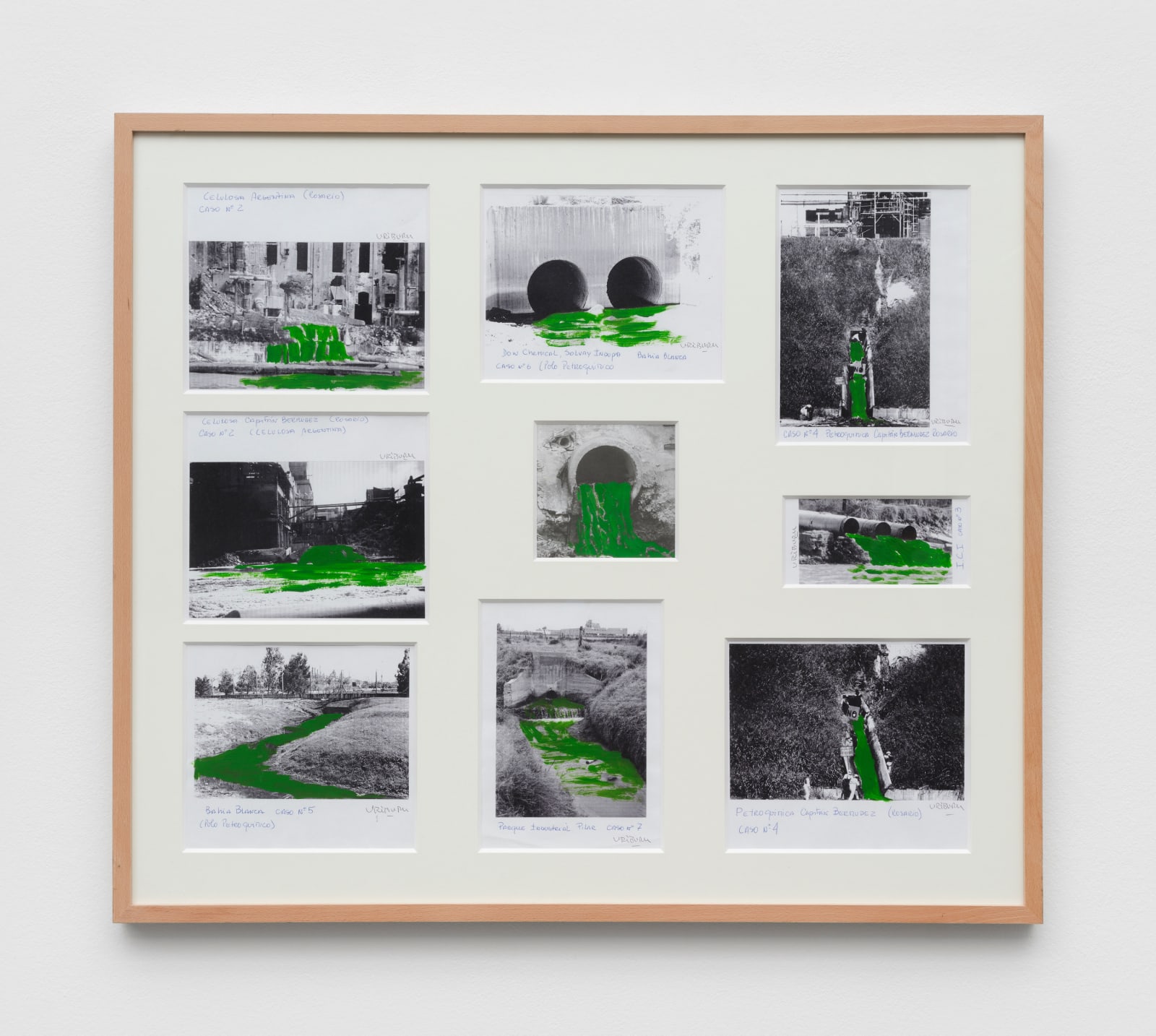Nicolás García Uriburu
Study for Polluting Companies Sponsor, 2000
engraving, print, gouache, ball point pen on paper
framed dimensions:
67 x 77 X 3 cm
26 1/2 x 30 1/4 X 1 1/4 in
unique
67 x 77 X 3 cm
26 1/2 x 30 1/4 X 1 1/4 in
unique
The components of Study for Polluting Companies Sponsor, 2000 were developed in 1999, and were the sketches of the work exhibited at the First International Art Biennial of Buenos Aires...
The components of Study for Polluting Companies Sponsor, 2000 were developed in 1999, and were the sketches of the work exhibited at the First International Art Biennial of Buenos Aires in 2000. The work comprised documentation of nine so-called cases first investigated by Greenpeace, which analyzed the water and the toxic pollutants in the drains resulting from factories dumping their waste into rivers. After weeding through the foliage and vegetation which masked the “crime scenes,” Uriburu photographed them. These black and white images, blown up in scale, were further intervened with Uriburu’s signature colorization, marking the site of decomposition with green paint. Alongside these images, the names of polluting companies and their products were prominently labeled in red and black on the floor of the exhibition space. A dispute arose when García Uriburu accused the museum director, Jorge Glusberg, of censorship for removing the name “Frigoríficos Coto” from the installation. Glusberg countered that he had requested the removal of an unappealing plastic cover over the names, which led to unintended displacement. The incident underscored tensions over artistic expression and corporate critique in public exhibitions.
Polluting Companies Sponsor, 2000, is an extension of the poetic expression of Uriburu’s colorations into a more concrete political gesture. The use of fluorescent green, already heavily coded in pop culture as the color of radioactive waste, takes on a more practical purpose within the context of these documentations, as a sort of highlighter; akin to the use of fluorescent illuminations to gather evidence in crime scene investigations. The work also marked a solidification in Uriburu’s practice as both political art and activism as well as the tension between these objectives, as he risked alienation from art institutions in favor of the uncorrupted critique.
Polluting Companies Sponsor, 2000, is an extension of the poetic expression of Uriburu’s colorations into a more concrete political gesture. The use of fluorescent green, already heavily coded in pop culture as the color of radioactive waste, takes on a more practical purpose within the context of these documentations, as a sort of highlighter; akin to the use of fluorescent illuminations to gather evidence in crime scene investigations. The work also marked a solidification in Uriburu’s practice as both political art and activism as well as the tension between these objectives, as he risked alienation from art institutions in favor of the uncorrupted critique.

